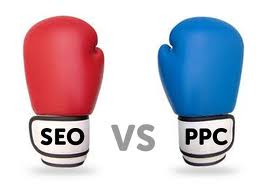 Whats the difference between a website lead generated via Pay Per Click, AdWords for example vs. Search Engine Optimisation (SEO)? Is there one?
Whats the difference between a website lead generated via Pay Per Click, AdWords for example vs. Search Engine Optimisation (SEO)? Is there one?
Whether you agree with what I have to say is up to you, however, in my experience of running an online marketing agency that utilises both for our own lead generation as well as those for our clients, I have found the following:
Quality of leads
In my experience, the quality of leads generated via either of the channels can vary significantly as it all comes down to the keyword/keyphrase selection during the start of the campaign. On an average, we receive about 1 call every 3-4 weeks from new clients who ask us why they aren’t receiving any leads in spite of of page 1 rankings via the SEO efforts [ see related post ]. Upon closer inspection we usually find that they’re getting page 1 rankings alright, however, the search queries are far from relevant resulting in a very low rate of conversion from the SEO traffic.
In case of PPC, it’s a little different – if you compare the Cost Per Acquisition of each lead, PPC is higher in most cases, in a large part due to the success of Google’s AdWords platform [see how PPC rates have increased]. Which is why clients are much more careful when selecting the search terms in AdWords. Of course, if you’re using AdWords Express, its a totally different story – whilst Google’s auto-suggest tool is brilliant, it’s still error-prone.
In terms of lead quality therefore, i would say PPC is higher unless you’re having your SEO campaign run professionally or in-house by someone who knows exactly what they’re doing when it comes to keyword research, allocation of landing pages and so on.
Cost Per Lead
This is a no-brainier. I cant think of a single instance where you can get lower Cost Per Leads than via SEO. I would go far as saying that SEO deliverers lower Cost Per Leads than is possible from any other paid advertising platform currently available.
There are 2 primary reasons for this:
- As discussed earlier, CPC rates have risen significantly over the last 4-5 years. AdWords is supposedly a ‘bidding’ platform but even for search terms that has absolutely zero search volume and no other advertiser bidding for it, it’s unlikely you’re going to get a starting bid from £0.01. The popularity of the AdWords platform means that competition is fierce, especially for super-competitive industries such as health, insurance, law and medical.
- The time and resources required for SEO on the other hand haven’t increased significantly. Yes, as social signals have become a bigger part in the ranking factor, you wont get away with just writing content which means you’ll need to incorporate Social Media into your SEO strategy resulting in an increase in resources required but I don’t see a huge increase in costs overall, over the last few years or so.
Undoubtedly, I’d say SEO comes out on top if you want lower a Cost Per Lead.
Perception
There’s another intangible difference between the 2 and that is what your listing (whether it’s an ad or organic) tells your potential customer.
If they know a fair bit about the online marketing landscape, chances are, they’ll know that running ads on AdWords doesn’t come cheap, SEO is less expensive to run and there’s a possibility that contacting a company running an AdWords campaign may charge higher to cover marketing costs.
On the other hand, if they dont know much about how PPC and SEO work, it’s not uncommon to find that they may perceive your company as offering a better service based on high up the search results page you appear, regardless of whether it’s an ad or an organic listing (remember, they dont know much about this field).
If you’re a small business owner getting started in online marketing and wondering which one you could possibly handle on your own (no, I don’t recommend you try both at once if you’re new to this), then there’s the question of…
Mastering anything takes time and commitment so if you’re wondering which one is easier to become an expert at, I’d say both are the same! Whilst the SEO landscape may be evolving quicker than PPC, both channels will require consistent time and commitment if you wish to get very good at it.
From a “getting a good grasp” point of view, PPC is certainly easier as you could learn the basic tools and techniques (lowering your CPC rates, improving your Quality Score and so on) and you should be just fine. SEO on the other hand will require much more if you want to see results. Because the margins for error are so low (Page 1 or not!), you’ll need to get pretty good at every aspect of SEO (content, link building, Social Media and so on) before you see any results, especially if you’re in a competitive industry (and, who isnt these days?).
If you’re looking for a digital marketing agency why not give Flow20 a try? We can help you with PPC management, Facebook ads, LinkedIn Advertising and Social Media campaigns and even Google Ads training.



